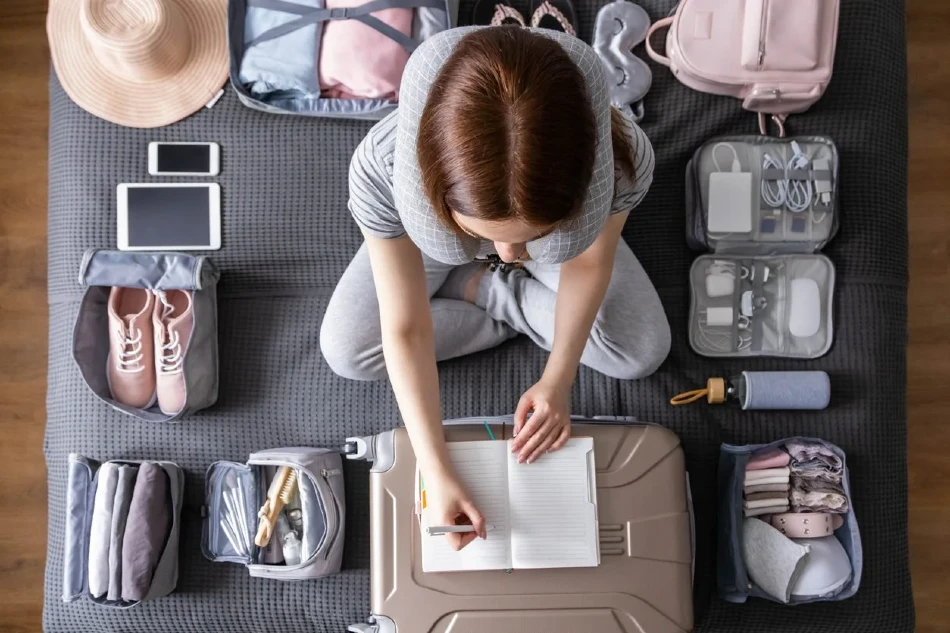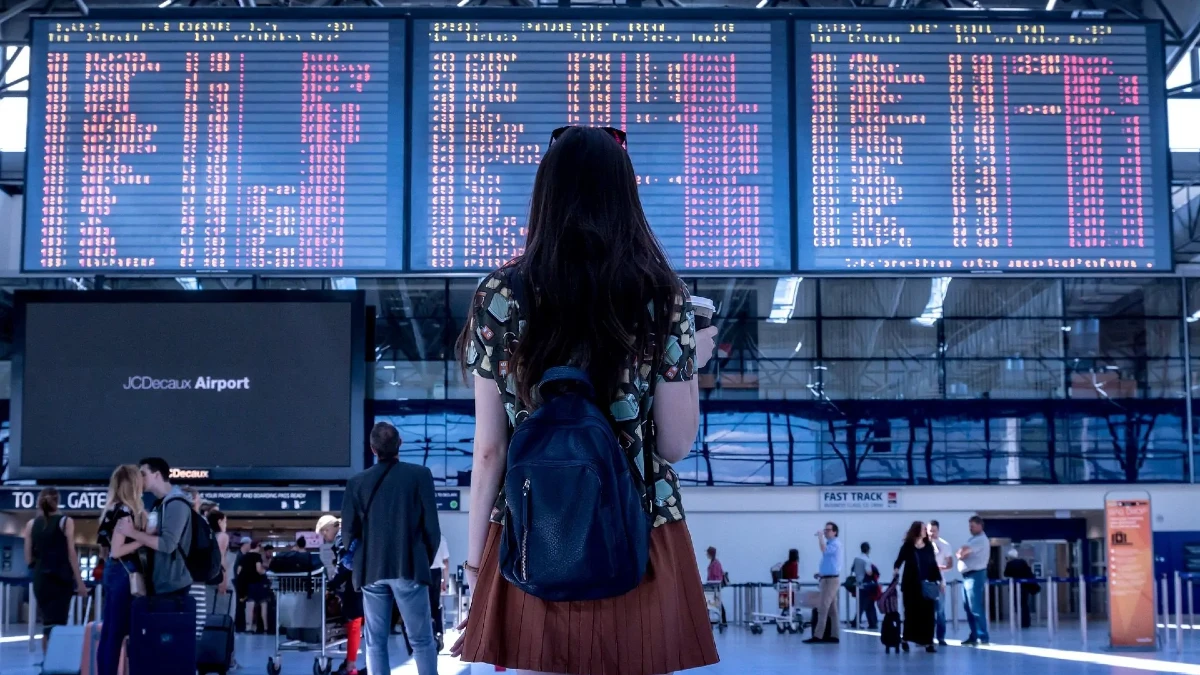Traveling abroad for the first time is a thrilling leap into a world of new experiences and discoveries.
It’s a journey that opens doors to diverse cultures, breathtaking landscapes, and unforgettable adventures.
However, for first-time international travelers, the thought of stepping into unknown territories can also bring a mix of excitement and apprehension.
The process involves a steep learning curve, from navigating different customs and languages to managing logistics like accommodation and transportation.
This comprehensive guide is tailored to ease the anxieties of first-time travelers by providing essential tips and advice, ensuring a smooth and enjoyable journey.
Researching Your Destination
Researching your destination’s customs, culture, and etiquette is vital.
Utilize resources like cultural guides, travel blogs, and online forums, where seasoned travelers and locals often share valuable insights.
Staying informed about the latest travel advisories is equally important.
Government websites like the U.S. Department of State or the UK’s Foreign and Commonwealth Office offer comprehensive, up-to-date travel information, including safety advisories, entry requirements, and health precautions.
These advisories play a crucial role in planning as they offer guidance on local laws and customs that might be unfamiliar or significantly different from what you’re used to.
Your passport should be valid for at least six months beyond your planned return date, a common requirement in many countries.
Every country has its own set of rules for visa requirements – some may offer visa-on-arrival or e-visas, while others require a more extensive application process.
It’s important to start this process well before your trip to avoid any last-minute complications.
Keep digital copies of important documents like passports, visas, insurance policies, and itineraries. Cloud storage services like Google Drive or Dropbox can be useful for this.
Financial Planning and Budgeting
Start by breaking down your trip costs into airfare, accommodation, meals, transportation, and entertainment categories.
Use budgeting tools or apps to track your expenses and adjust your spending as needed.
Understand the best ways to access money abroad. Research currency exchange rates, international transaction fees, and whether to use cash, credit cards, or travel cards.
It’s often more economical to exchange currency in your home country or withdraw cash from ATMs upon arrival, so be cautious of high fees at airport exchange counters.
Be on the lookout for discounts on tourist attractions and activities. Many places offer special rates for students, seniors or during off-peak hours.
Health Preparations
Visit a travel health clinic to get up-to-date information on the required vaccinations for your destination, aligning with global health advisories.
Remember to carry a copy of your vaccination record.
Invest in comprehensive travel insurance that covers medical emergencies, trip cancellations, and luggage loss.
When choosing a policy, ensure it covers the specific needs of your destination and any activities you plan to undertake, such as adventure sports.
In the current travel climate, checking for coverage related to COVID-19 disruptions is also crucial.
Packing Smart

Create a packing list based on your destination’s climate and cultural norms. Essentials typically include appropriate clothing, toiletries, comfortable shoes, and medications.
Remember to pack universal travel adapters, power banks, and noise-cancelling headphones.
For those looking to capture memories, a compact camera or smartphone with a good camera is necessary.
Additionally, practical accessories like a travel pillow, eye mask, and earplugs can make long flights more comfortable.
Opt for lightweight and versatile luggage and use a luggage scale to check your bag’s weight before heading to the airport.
Learn efficient packing techniques, like rolling clothes, to maximize space and minimize baggage weight.
Flight and Airport Navigation
For first-time international travelers, navigating through airport procedures is a crucial step.
Arriving early, typically 2-3 hours before your flight, is essential to allow ample time for check-in, security checks, and boarding.
Check your airline’s luggage policies and arrive at the airport early.
On long flights, prioritize comfort by wearing loose clothing, staying hydrated, and stretching regularly.
To minimize jet lag, adjust your sleep schedule to the destination’s time zone during the flight.
Once you land, follow the airport signs to immigration, baggage claim, and customs.
Accommodation and Local Transportation
Research various options, such as hotels, hostels, or vacation rentals, considering factors like location, price, amenities, and traveler reviews.
Websites like Booking.com or Airbnb offer various choices catering to different budgets and preferences.
Understand local transportation options, including public transit, taxis, and ride-sharing services.
Many cities offer tourist passes for unlimited travel, which can be cost-effective.
Apps like Google Maps and local transport apps like Uber are invaluable for real-time navigation and understanding routes, schedules, and fares.
Learning a few basic phrases in the local language can help you navigate and communicate with drivers or fellow commuters.
Cultural Etiquette and Engagement
Adapting to local etiquette is key to a respectful and immersive experience.
This includes dress codes, tipping customs, and general behavior.
Learn basic phrases in the local language.
This not only eases communication but also shows respect for the local culture.
Language apps or phrasebooks can be handy tools for bridging communication gaps and fostering better engagement with culture and people.
Engaging in local activities and traditions offers a deeper, more authentic travel experience.
This could involve attending local festivals, trying traditional crafts, or participating in community events.
Food and Culinary Experiences
One of the most exciting aspects of traveling abroad is exploring local cuisine.
Research popular local foods before your trip, and don’t hesitate to try street food or dine at small, local eateries – often these places offer the most authentic and memorable meals.
If you have dietary restrictions or allergies, learn to communicate these in the local language.
Carrying allergy cards can also be helpful.
Consider apps or tools that help translate menu items to navigate dining options more easily.
Look for cooking classes, food tours, or wine-tasting sessions often available for tourists.
These experiences not only allow you to taste a variety of local foods but also provide insights into the region’s cooking methods and traditions.
Staying Safe and Secure
Stay aware of your surroundings, especially in crowded or unfamiliar areas. Use a money belt or anti-theft backpack to secure valuables.
Familiarizing yourself with the local emergency numbers and the location of your country’s embassy or consulate can provide additional security.
Carry a small card with emergency contact information.
Travelers should have a basic first aid kit and know how to access medical care if needed.
This includes knowing the location of nearby hospitals or clinics and having travel health insurance that covers medical emergencies.
Sustainable and Responsible Travel
As a responsible traveler, adopting eco-friendly practices is essential.
This includes reducing plastic usage by carrying a reusable water bottle, using public transport or walking instead of private taxis, and supporting eco-friendly hotels and tours.
Sustainable travel also involves being mindful of your environmental footprint – avoid activities that harm the environment or wildlife.
Engage with local businesses and communities.
This can include shopping at local markets, participating in community-based tours, and respecting local traditions.
Being an informed traveler, understanding the significance of these sites, and adhering to guidelines help preserve these important places.
Technology and Connectivity
Consider international SIM cards, portable Wi-Fi devices, or local data plans for convenient access to the internet, as they help avoid high roaming charges.
Additionally, apps like WhatsApp, Skype, or Viber offer cost-effective ways to communicate with family and friends back home.
GPS and map apps, such as Google Maps or Citymapper, can be invaluable in helping you navigate unfamiliar places.
Before traveling, download offline maps of your destination as a backup.
Be cautious when connecting to public Wi-Fi networks, and consider using a Virtual Private Network (VPN) for secure browsing.
Protect your devices with strong passwords and avoid accessing sensitive personal information on unsecured networks.
Being mindful of digital security helps protect your data and ensure a worry-free travel experience.
Post-Trip Reflection and Sharing
Reflecting on your travel experiences after returning home is a valuable part of the journey.
Keeping a travel journal, blog, or vlog allows you to document and process your experiences, thoughts, and lessons learned.
Sharing your travel experiences can inspire and inform others.
Platforms like social media, travel forums, and personal blogs are excellent avenues for distributing your stories and insights.
Share practical tips, interesting discoveries, and personal reflections to provide a comprehensive view of your journey.
Post-trip reflections often spark ideas for future travels.
Evaluating what you enjoyed, what you would do differently, and what you learned can help you plan your next adventure.
This guide aims to prepare you for the various aspects of international travel, from planning and packing to immersing yourself in local cultures and ensuring safety.
Remember, each travel experience is unique, and the lessons learned are invaluable.
With every trip, you’ll become more adept at navigating the nuances of international travel, enriching your journeys and your understanding of the world.
Embrace the adventure, cherish the memories, and always keep exploring. Your journey as a global traveler has just begun.
